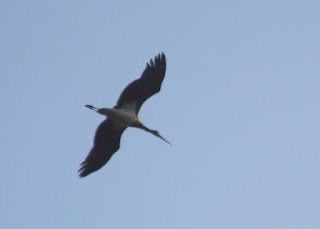November 2008 - the members of indianaturewatch.net decided to meet in Gir National Park and Wildlife Sanctuary. This is the only place in the world where the Asiatic lion can be seen in the wild. Situated in the district of Junagadh that lies in the North -west state of Gujerat in India, it has a unique and diverse habitat of dry decidous forests combined with shrubland.
It was truly an enjoyable experience to interact with 26 wildlife photographers who enthusiastically shared their experiences in their field as well as views on cameras, lenses & the like. The evenings had some useful discussion on photography coupled with some friendly banter between fans of Nikon vs. Canon equipment. To see some of the stunning photographs of the natural beauty and wildife of the Indian sub-continent visit indianaturewatch.net- the second largest regional online community of its kind on the net!
The Asiatic Lion

A Lioness had been spotted at Karemba and there was much excitement. Immediately, our jeep driver, Rasik revved up his engine and charged at breakneck speed over the rough roads. Equally excited was our guide Tamsi and of course all of us.
As we drove in to the area a large number of jeeps had already parked themselves almost a few yards away from where she was lying (picture above
 ).
).All of a sudden she got fed up of the human population surrounding her and decided to walk off with a few disgusted roars (grow up - all you Homo sapiens!). This picture shows her striding off and then she finally decides to settle down in the grass once again giving us good views below.
The Asiatic lion (Panthera Leo persica) is distinguished from the African lion by its slightly smaller build as well as the smaller mane in the males. Sighting in the Gir forest is more challenging considering the dense vegetation in the area especially after the monsoons while in many parts of Africa it is to be found in open Savannah areas.

 While a male Lion sighting was not in our luck on these days, we found fresh pugmarks of a male on the last day of our safari. According to the beat guard, he was in the nearby bushes but was not in a mood to oblige the visitors.
While a male Lion sighting was not in our luck on these days, we found fresh pugmarks of a male on the last day of our safari. According to the beat guard, he was in the nearby bushes but was not in a mood to oblige the visitors.The species is believed to have travelled from Persia (now Iran) and entered India around 6000 B.C. and was found in the plains of Northern and Central India. There are however no records of it in the area south of the river Narmada. Like the Tiger and other beautiful cats it was ruthlessly hunted by the Indian royalty as well as by the British rulers for sport. The species gradually declined in numbers and became confined to the forests of Gir in the native state of Junagadh. In 1908, the Lion population of Gir reached an alarming low of 20 and the Nawab (Local ruler) of Junagadh banned all hunting and enforced its preservation. After Independence, the Government of India also enforced the ban on hunting through legislation. Today the number of Lions in the last census has risen to nearly 360. However, the 1400 sq. kms of area now seems inadequate to hold this population, and the big cats are now straying out and can be chanced upon even near the sea shore and uncomfortably close to human habitation.
This beautiful animal has also been at the centre of an unseemly controversy about shifting few of the animals to a forest area in the neighbouring state of Madhya Pradesh(MP) planned as an alternate home by the Government of India. The Gujarat Government under which the areas falls, has vigorously opposed parting with any animal claiming unsuitability of habitat as well as lack of protection measures offered by the MP Government.
Blue-bull (Nilgai)
What a camouflage!
Variety of birdlife in the Sanctuary
 Besides being home to the about 370 Asiatic lion and a large number of predators, Gir is certainly one of the best birding sites in the country with a list of nearly300 species. Some pictures of the birdlife.
Besides being home to the about 370 Asiatic lion and a large number of predators, Gir is certainly one of the best birding sites in the country with a list of nearly300 species. Some pictures of the birdlife.This picture of the Median egret is taken at dusk.


Two pictures of the Short toed snake eagle.

A Black stork in flight

Grey heron on the lookout for dinner
Scenes of the Sanctuary
Subscribe to:
Posts (Atom)



































